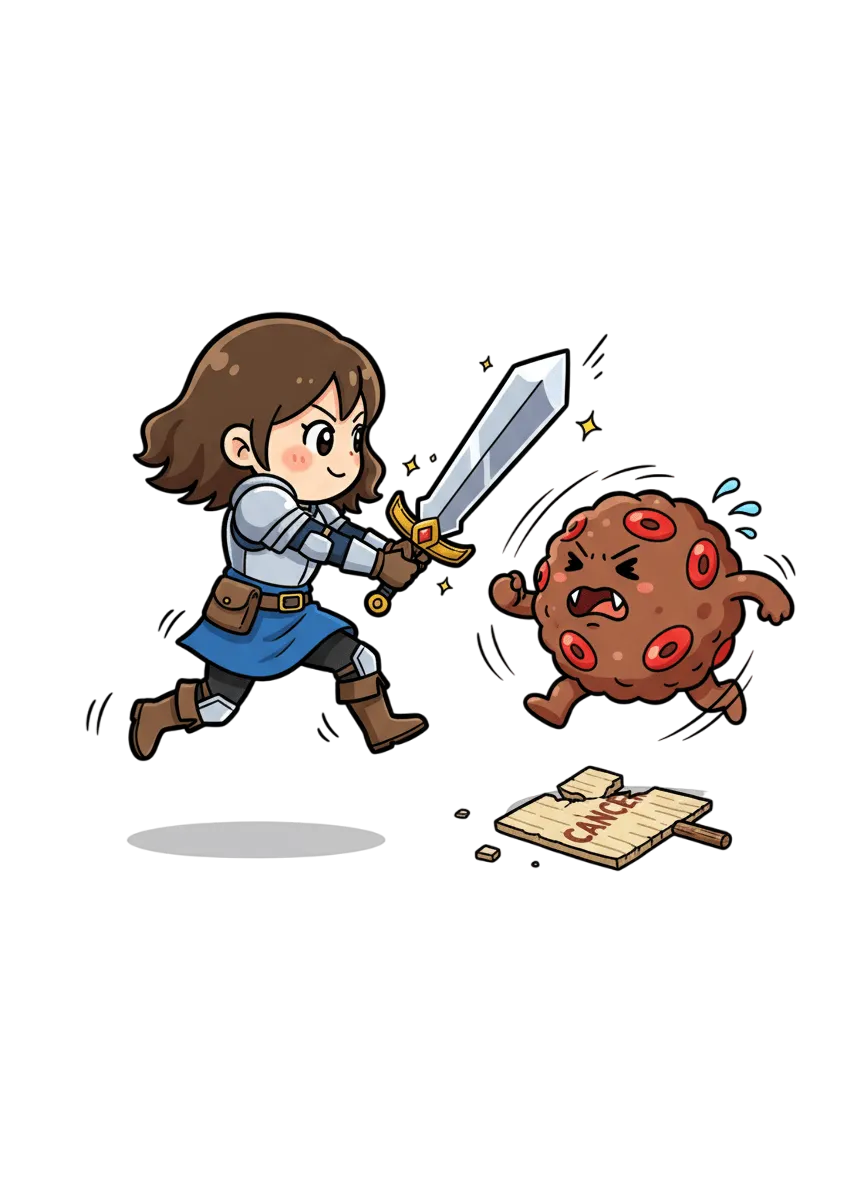
Our story does not begin with a pipette or a petri dish. It begins with a question that lies at the crossroads of biology and humanity: Why, after decades of research, does cancer still remain so difficult to treat?
Before stepping into the lab, our team decided to take a different approach — to listen first. We spoke with clinicians who treat patients, researchers who decode immune responses, and community members whose lives have been touched by cancer. We learned that cancer is not only a medical challenge — it’s also an emotional, social, and educational one.
This realization defined our mission: to design a scientific project that doesn’t just generate data, but also builds understanding. To engineer biology in a way that reflects the real human context of cancer treatment. That’s how our journey began — a quest that blends immunology, synthetic biology, and public responsibility.

Chapter 1 — The Call to Action
Every great quest begins with a formidable adversary. For us, that adversary is cancer — a disease that grows not only in the body but also in society’s collective fears. Cancer cells are cunning. They evolve. They can hide from the immune system by exploiting a weakness in our natural defense mechanism — the MHC (Major Histocompatibility Complex), known in humans as HLA (Human Leukocyte Antigen).
Under normal conditions, HLA acts like a biological bulletin board. It displays fragments of proteins (antigens) from inside the cell to immune sentinels called T-cells, allowing them to distinguish “self” from “non-self.” But cancer cells have learned to manipulate or silence these signals, effectively putting on an invisibility cloak.
That’s when our question took form: “If cancer can hide its identity, can we redesign the HLA system so the immune system can see it again?” This idea became the foundation of our project — to engineer HLA molecules that enhance immune recognition of tumor-specific antigens.



Chapter 2 — Gathering Wisdom: Human Practices First
Before setting up our first experiment, we needed a compass — and that compass came from people. Our project began with interviews and surveys, not cloning or culture plates.
We spoke with immunologists, oncologists, and computational biologists about the challenges of modern cancer immunotherapy. They told us that while immunotherapy has changed lives, it remains unpredictable — its success depends heavily on each individual’s unique HLA type. From them, we learned that the true bottleneck isn’t just technical; it’s biological diversity itself. Every person carries a different HLA combination, shaping how effectively their immune system recognizes cancer.
In parallel, our public awareness survey revealed gaps in understanding around immunotherapy, HLA diversity, access, and cost. These insights reshaped our trajectory: we set dual goals — to address the biological problem of immune recognition through experimental design, and the social problem of misunderstanding through education. Human Practices didn’t just support our project — they shaped it.

Chapter 3 — Forging Our Tools: Engineering the Immune Display
Guided by expert insights and public feedback, we designed our core experiment around one of the most common HLA types — HLA-A*02:01 — to explore how structural changes affect stability and peptide presentation. We constructed four plasmids:
- Wild-Type HLA-A*02:01 — baseline reference for benchmarking.
- Mutant #1 (W167A) — designed to subtly reshape the peptide-binding groove.
- Mutant #2 (Y7A, Y99A, Y159A, Y171A) — multiple coordinated substitutions to test cooperative effects.
- β2-Microglobulin (non-tagged) — the stabilizing partner required for proper folding and assembly.
These constructs were cloned into pET21a, expressed in E. coli, and purified using affinity chromatography and refolding protocols optimized for soluble MHC protein production. We verified purity by SDS-PAGE and quantified yield with BCA assays.
Beyond oncology, our workflow opens doors to vaccine design, autoimmune research, and industrial protein engineering. By turning a core immunological mechanism into a modular synthetic system, we built a universal research tool that future teams can adapt.



Chapter 4 — From Awareness to Education
Our survey showed that many people fear cancer because they don’t fully understand it. To close that gap, we created a student-led presentation, “What Cancer Really Is.” This was not a technical lecture; it was an open conversation for everyone.
We explained how cancer arises from uncontrolled cell division (like weeds overtaking a healthy garden), and covered the major treatment options — surgery, chemotherapy, radiation, targeted therapy, and immunotherapy — in clear, relatable terms. We also addressed real-world concerns: treatment cost, accessibility, and why newer therapies, though promising, are not yet universal. This project completed our Human Practices loop: Survey → Design → Experiment → Communication.

Chapter 5 — The Journey Ahead
As we look forward, our path extends beyond iGEM. The methods we’ve built, the data we’ve collected, and the lessons we’ve learned form the basis of a platform for immune-engineering education and innovation.
Scientifically, our engineered HLA constructs can be tested further for binding efficiency and stability, potentially guiding next-generation personalized immunotherapies or population-aware vaccine design. Socially, we’ll continue educational outreach with schools and local organizations to build accessible, open-source learning resources. We hope our HLA toolkit, survey model, and educational framework become tools for the next team ready to take on their own challenge.

Join Us on Our Quest
The story of TJI-Seoul is still being written. We invite you to explore our wiki, learn about our science, and share our belief that innovation should always serve people. Together, let’s make the future of cancer treatment — and synthetic biology — a little brighter, one discovery at a time.
